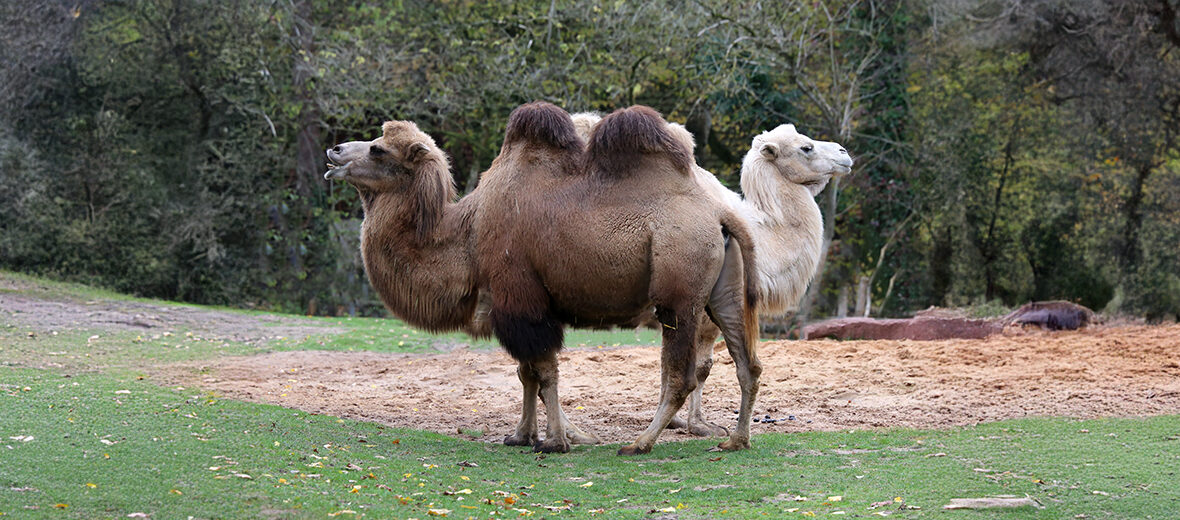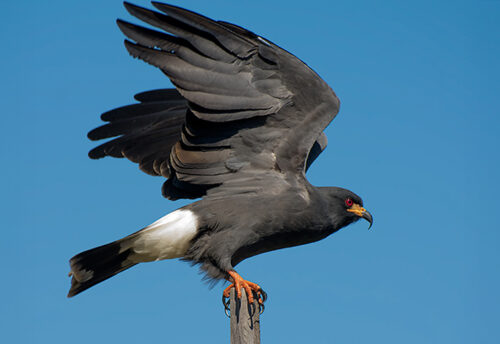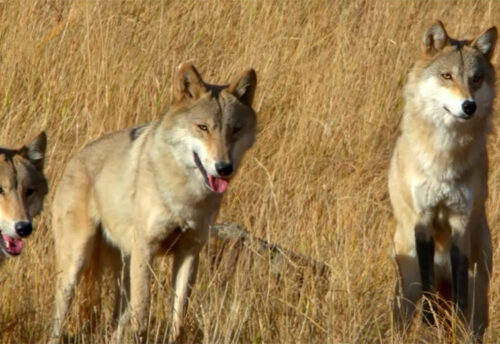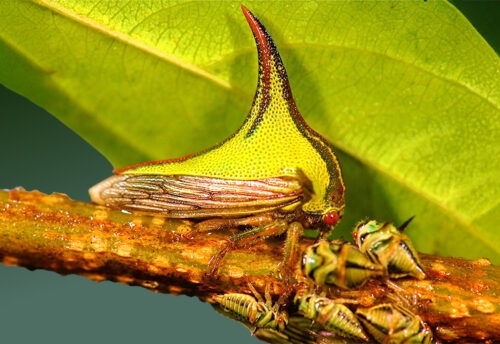
The wild bactrian camel is closely related but not ancestral to the domestic bactrian camel. They hail from Northwest China and southwestern Mongolia. Sadly, these creatures face the threats of habitat loss and destruction at the hands of residential and commercial developments, farming, ranching, mining, and quarrying; hunting; trapping; the reduction in water points (oases) due to climate change, that brings about drought; and predation, via wolves that have increased their hunting of these animals. The IUCN lists these camels as Critically Endangered. Their populations are also decreasing.
First the Stats…
Scientific name: Camelus ferus
Weight: Up to 2,200 lbs.
Length: Up to 11.5 feet
Height: Up to 5.9 feet, at the shoulders; up to 7 feet, at the humps
Lifespan: Up to 50 years
Now on to the Facts!
1.) For 45 years, the region of the Gashun Gobi was the nuclear test site area of China. In spite of this, the wild bactrian camel survived and is apparently breeding naturally. Since the cessation of nuclear tests in China, the wild bactrian camel now faces new threats including highly toxic illegal mining and hunting for food and sport.
2.) While originally considered a subspecies of the domestic Bactrian camel, later research recognized the domestic bactrians as a separate, sister species to the wild bactrian.
3.) They are 1 of the few mammals able to eat snow to provide themselves with liquids in the winter.
4.) These camels can survive up to 7 months without drinking standing water, instead gaining the necessary fluids from the plants they eat.
5.) There are only an estimated 950 wild individuals remaining, to date.
But wait, there’s more on the wild bactrian camel!
6.) Wild bactrians diverged from domestic bactrians approximately 1.1 million years ago, during the Pleistocene epoch.
7.) Wild bactrians are slightly smaller than their domestic counterparts and have been described as lithe, and slender-legged, with quite narrow feet and a body that looks laterally compressed. The humps of the wild bactrian camel are also smaller, lower, and more conical in shape than those of the domestics.
Did you know…?
It is a myth that camels store water in their humps. However, they do store fat in their humps. This fat serves as an energy reserve, allowing camels to go for extended periods without food.
8.) Even though they can go for extended periods of time without drinking water, when they do drink, they consume copious amounts of water. In fact, they can drink up to 50 gallons of water in under 30 minutes!
9.) Mongolians call wild bactrians havtagai, which translates to “flat-head”.
10.) The wild bactrian camel is also able to survive on water that is more saline than seawater, something which likely no other mammal in the world can tolerate, not even domestic bactrians.
But wait, there’s still more on the wild bactrian camel!
11.) These highly migratory critters can be seen in herds of up to 30 individuals.
12.) A group of camels is called a caravan, flock, herd, or train.
Did you know…?
Wild bactrian camels were considered for introduction at Pleistocene Park in Northern Siberia, as a proxy for the extinct Pleistocene camel species. If this had been feasible, it would have increased their geographic range considerably, adding a safety margin to their survival. In 2021 however, domesticated bactrians were introduced to the park instead.
13.) Females undergo up to a 13 month gestation (pregnancy) that yields a single calf.
14.) The calf weighs in at around 100 lbs.
15.) In 1964, China began testing nuclear weapons at Lop Nur, which is home to many of the wild bactrians. The camels seemed to experience no apparent ill effects from the radiation and continued to breed naturally.
Now a Short Wild Bactrian Camel Video!
Be sure to share & comment below! Also, check out the Critter Science YouTube channel. Videos added regularly!

Want to suggest a critter for me to write about? Let me know here.
Some source material acquired from: Wikipedia & IUCN
Photo credit: Rufus46



